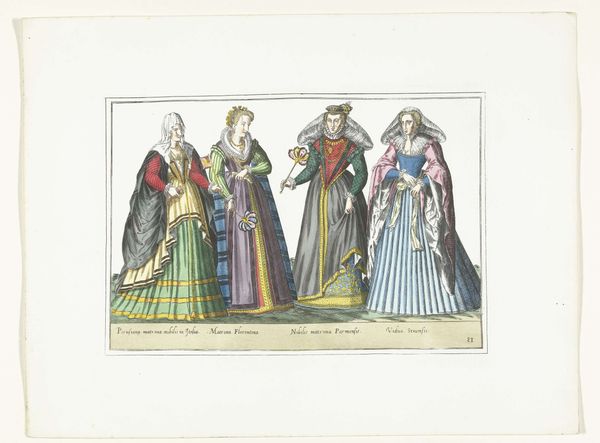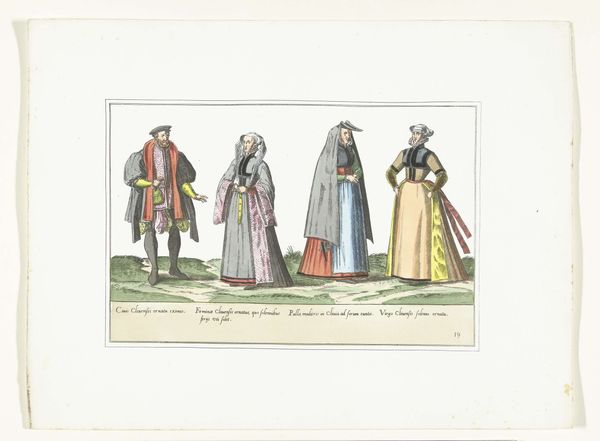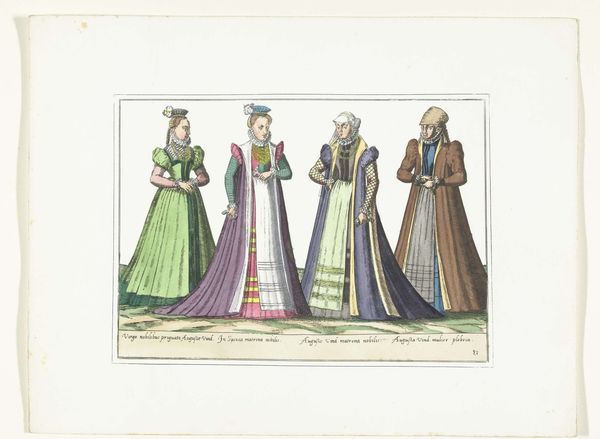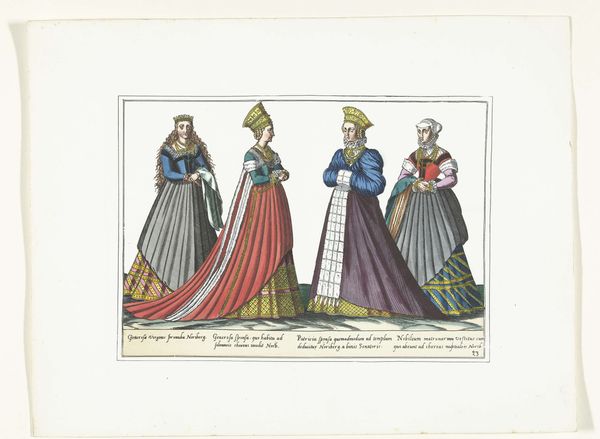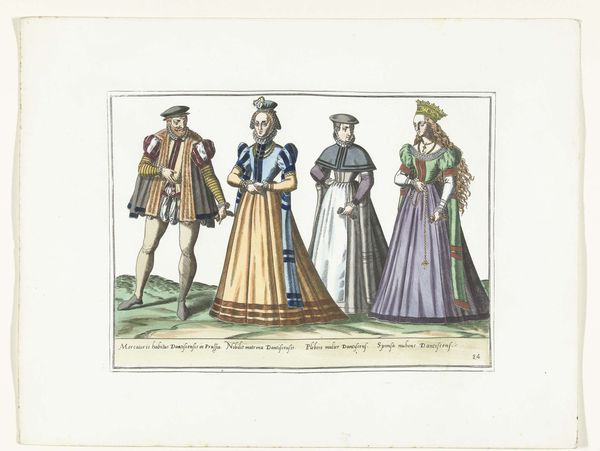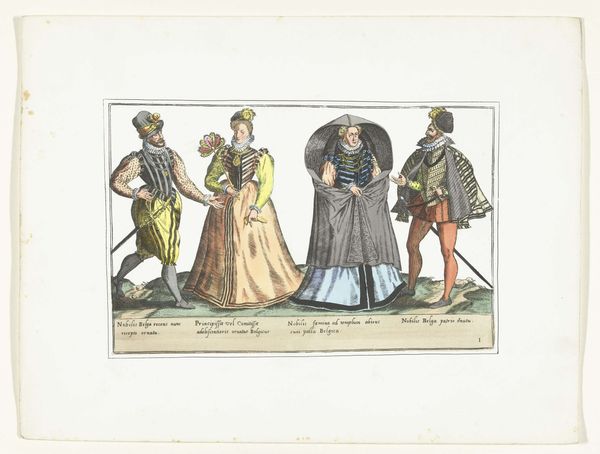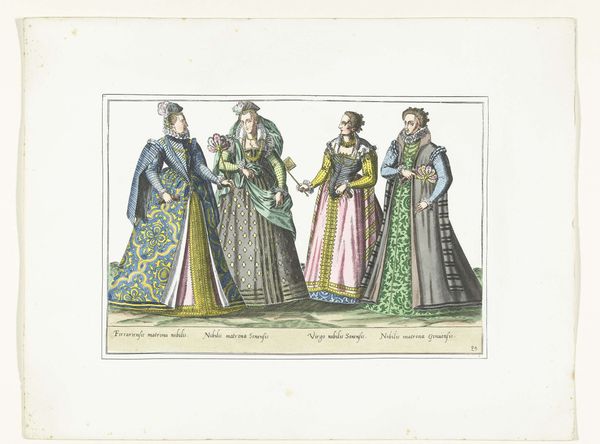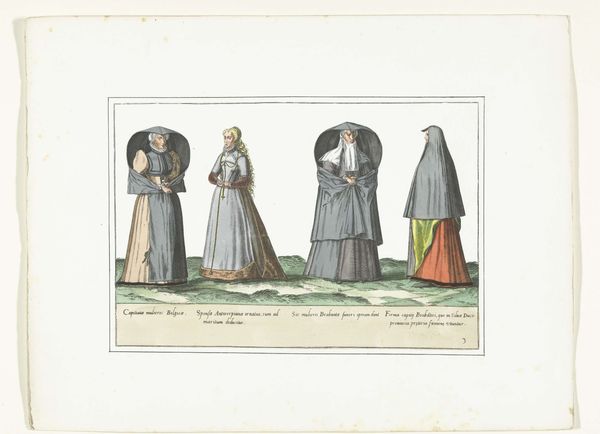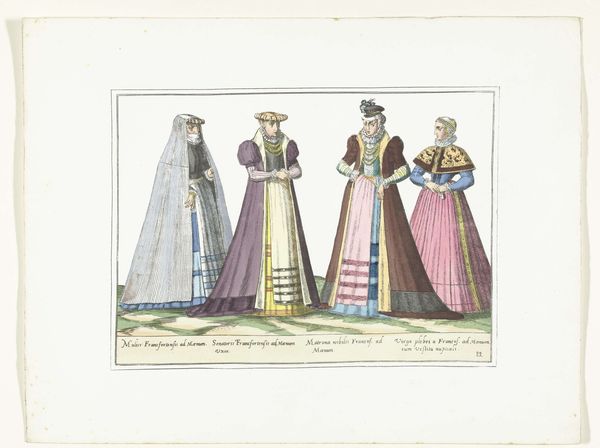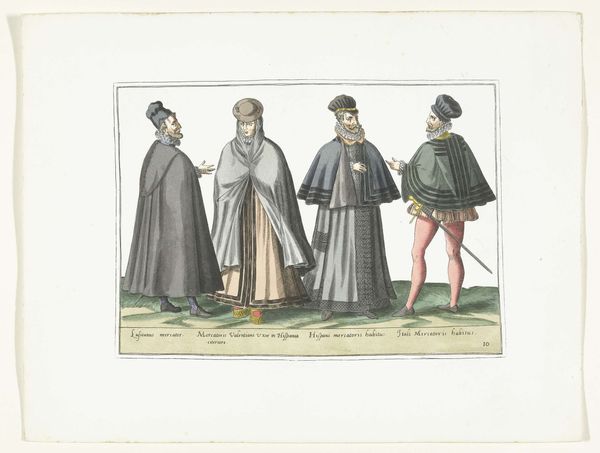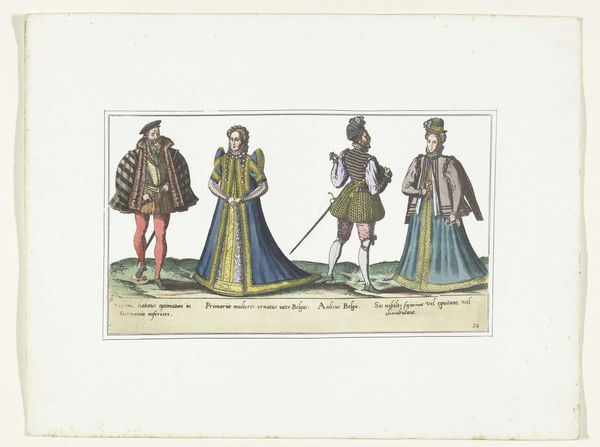
Dimensions: height 274 mm, width 360 mm
Copyright: Rijks Museum: Open Domain
Curator: This print, dating from 1872-1875, offers us a fascinating glimpse into late 16th century German fashion. The Rijksmuseum holds this anonymous piece entitled, "Vier vrouwen gekleed volgens de Duitse mode, ca. 1580." It translates to "Four Women Dressed According to German Fashion, circa 1580". Editor: It strikes me as strangely subdued. Despite the vivid colours in some of the costumes, the overall effect is quite reserved and formal, even a little solemn. The women stand rigidly, almost like paper dolls. Curator: That rigidity is inherent in the medium of engraving itself, especially when aiming for historical accuracy in representing attire. But observe the intricate linework creating volume and texture. Each fold, pleat, and embellishment serves to articulate not only the fabric but also the social standing it implies. Editor: Indeed. The fourth figure, enveloped almost entirely in that dark, voluminous cloak... is she in mourning perhaps? Or is this simply a fashion statement? I'm immediately curious about the cultural implications of these garments. Curator: Most likely a fashion of its time! These costumes weren't just about aesthetics. Consider how they communicated identity within a rigid social structure. The silhouette, the colors, and the fabrics all signaled status and allegiance. Look at the first woman; the color combination in her dress creates contrasts within each plane and generates visual depth. Editor: And yet, presented like this, side-by-side, they seem less like individuals and more like examples within a catalog. This raises questions about the print's original purpose and audience. Were these fashion plates intended for the elite, offering inspiration or validation? Curator: Quite possibly. They served a didactic purpose, categorizing different female archetypes by costume, mirroring broader cultural preoccupations with roles. Observe how line work establishes geometric, almost severe compositions that dictate how your gaze follows the contours. Editor: A meticulously crafted, yet slightly unsettling window into the past. The artist transforms the everyday into emblems of order and rank, giving each color and shape cultural resonance. Curator: Precisely. It pushes us to understand dress as visual language. It highlights the artifice involved in constructing identity. Editor: And for me, the distance – both historical and artistic – invites reflection on the transient nature of fashion and the enduring human need to express ourselves. Curator: Agreed, there's also the timeless art of line, form, and the subtle power of colour that we can continue to investigate and understand through pieces like this.
Comments
No comments
Be the first to comment and join the conversation on the ultimate creative platform.
